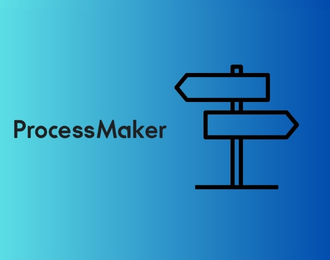Compliance managers across banking, insurance, and finance industries are grappling with a dual challenge: customers expect near-instant onboarding, while regulators demand stricter anti-money laundering (AML) and counter-terrorist financing (CTF) checks.
Yet in 2025, too many organizations remain stuck with manual KYC processes that are slow, costly, and fraught with risk. The consequences are significant — more than 60% of applicants abandon onboarding when verification processes drag on.
This guide explores why manual KYC is falling short, the measurable benefits of automated KYC verification, and a step-by-step roadmap to implementation.
Additionally, we will highlight how FlowForma simplifies KYC automation with its no-code platform, advanced AI Suite, built-in audit trails, and integrated document and form management capabilities.
What is KYC Automation?
 What is KYC Automation?
What is KYC Automation?
Know Your Customer (KYC) is the process of verifying customer identities, assessing risk, and ensuring compliance with regulatory requirements like AML and CTF. Manual approaches rely heavily on paperwork, email attachments, and manual data entry, which can lead to inefficiencies and errors.
By contrast, automated KYC solutions utilize artificial intelligence, biometric verification, and process automation to efficiently handle customer onboarding, sanctions compliance, and ongoing risk assessment.
These automated systems provide stronger safeguards against money laundering and financial crimes, while improving operational efficiency for compliance managers.
Challenges of Manual KYC Processes
 Challenges of manual KYC processes
Challenges of manual KYC processes
Manual KYC may have once been sufficient, but under today’s financial regulations and customer expectations, it has become a liability.
From missed AML checks to cumbersome onboarding processes and fragmented audit trails, the drawbacks are mounting across banking, insurance, and finance.
Here are the most common challenges:
1. Operational inefficiency
Manual KYC processes rely heavily on paper files and spreadsheets.
Banks report allocating 10–15% of their workforce to KYC and AML compliance, with staff being tied up in repetitive, manual verification tasks such as rekeying customer information and chasing missing documents. This inflates operational costs while adding no value to business operations.
2. High risk of errors and compliance failures
Human error is inevitable. A misspelled name, a missed sanctions update, or a misfiled record can derail customer verification and expose firms to compliance risks.
Regulators now expect continuous risk monitoring, but manual processes cannot keep pace. As a result, many financial institutions face fines, with AML-related penalties exceeding $6.6 billion USD in recent years.
3. Poor customer experience
Slow onboarding directly leads to a poor customer experience. Customers abandon applications when stuck in cumbersome onboarding processes, costing banks and fintechs both revenue and trust. Insurers see the same frustration when claimants wait weeks for manual verification.
4. Weak auditability
Auditors and regulators demand transparent, end-to-end audit trails. Yet manual KYC processes scattered across PDFs and email threads cannot deliver the accountability required for regulatory compliance. Healthcare providers, for instance, risk HIPAA penalties when they cannot produce audit-ready customer data records.
5. Lack of scalability
As laws evolve, manual KYC processes buckle. The EU’s 6AMLD introduced new liabilities for facilitating financial crime, while the U.S. Corporate Transparency Act expanded beneficial ownership reporting.
Insurance regulators now require enhanced due diligence for specific policies. Scaling manual processes to meet these requirements is impractical.
Key Benefits of Automated KYC Verification
 Key Benefits of KYC Automation
Key Benefits of KYC Automation
Automated KYC is more than a time-saver — it transforms compliance into a strategic enabler. By integrating KYC automation solutions into onboarding and monitoring workflows, organizations can meet regulatory compliance requirements while enhancing the customer experience and reducing costs.
1. Faster customer onboarding
Onboarding is often the first impression for new customers. With automated KYC solutions, institutions streamline the verification of customer identities by eliminating manual data entry and automating sanctions screening.
Use Case: In banking, accounts can be opened in a single digital session, delivering a seamless customer onboarding experience and driving increased customer satisfaction.
Watch this demo to learn more:
Customer onboarding in banking
2. Greater accuracy and fraud detection
Automated systems reduce human error and enhance risk management by detecting forged documents or anomalies in real-time. Machine learning algorithms continuously refine detection to reduce false positives.
Use Case: In insurance, automated KYC processes quickly flag falsified claims documents, allowing insurers to reduce fraud exposure while expediting genuine claims.
3. Stronger regulatory compliance
Automation enforces consistency across KYC processes. Detailed audit logs, sanctions checks, and regulatory adherence are built into the workflow.
Use Case: Financial services and banking institutions utilize automated KYC verification to meet AML and KYC standards, ensuring identity checks are logged and audit-ready. With FlowForma Copilot, you can easily automate and integrate this step into your workflow, streamlining compliance processes and enhancing operational efficiency.
4. Improved customer experience
Frictionless onboarding enhances the customer experience by making compliance transparent and invisible to users. Features like digital ID uploads and real-time risk assessment replace manual verification delays.
Use Case: Fintech apps use automated KYC to give customers instant access to digital wallets while ensuring regulatory compliance with AML directives.
5. Secure data collection and management
Effective KYC relies on accurate customer data. Automated KYC facilitates secure data collection, reduces errors, and ensures compliance-ready storage.
Use Case: In insurance, automated systems extract data from global databases, ensuring data analysis and structured records for underwriting without exposing sensitive information.
Additionally, with tools like FlowForma, data is stored within the insurer’s own SharePoint tenancy, ensuring end-to-end data security.
6. Cost efficiency and scalability
With regulations expanding, automated systems scale far better than manual processes. Combined with FlowForma’s transparent, process-based pricing, organizations can extend their compliance coverage without incurring unpredictable costs.
How to Automate KYC: A Step-by-Step Approach
 A step-by-step guide to KYC Automation
A step-by-step guide to KYC Automation
If you are looking to automate your KYC process, here’s a step-by-step guide:
Step 1: Identify High-Impact Workflows
Begin with processes that are compliance-heavy and resource-intensive, such as customer onboarding, AML screening, or suspicious activity reporting. Map these processes to highlight where automation can yield the greatest return.
Step 2: Select KYC Automation Tools
Choose KYC automation tools that support identity document validation, biometric checks, sanctions and PEP screening, risk scoring, and audit-ready reporting. Ensure the solution integrates seamlessly with your core systems and complies with the relevant regulations in your jurisdiction.
Step 3: Build Digital Workflows
Use no-code automation to design workflows that enforce required checks. With FlowForma Copilot, compliance teams can describe a process in plain English — “onboard client with ID upload, AML screening, risk scoring, and approval” — and Copilot generates it instantly.
In this screenshot, you'll see how you can use Copilot directly by clicking on a pre-formatted KYC prompt, or add your own customized prompt, upload a KYC form or process diagram.
 The financial services playground
The financial services playground
In the next screenshot, you'll see the output of the prompt with questions, forms rules etc. alongside the workflow design.

Screenshot of KYC process flow
 Copilot chat for KYC automation
Copilot chat for KYC automation
As shown in the image above, you can continue refining your process by incorporating suggested additions and using Chat to ask Copilot to tailor the process to your specific business requirements.
Want to try automating your KYC process with FlowForma Copilot? Start automating right here!
Step 4: Integrate with Core Systems
Ensure the workflows connect to CRM, ERP, AML platforms, and Microsoft 365. Integration creates a single source of truth, reduces duplication, and ensures accurate reporting across departments.
Tools like FlowForma integrate with Microsoft and SharePoint, and connect with over 1,000 other apps.
Step 5: Pilot, Test, and Scale
Start with a single process, such as onboarding new customers in one geography. Validate that the automated workflow improves speed, accuracy, and compliance. Once proven, expand to other areas, such as insurance claims verification or healthcare patient onboarding.
How FlowForma Supports KYC Automation
Many vendors offer point solutions for identity verification, but FlowForma provides a holistic AI-powered process automation platform designed for regulated industries. Its differentiators address both operational needs and regulatory requirements.
1. No-code flexibility
FlowForma’s no-code platform enables compliance managers to build, adapt, and deploy KYC workflows without IT support. This agility is critical for responding quickly to evolving laws, such as AMLD6 or the Corporate Transparency Act, where waiting for IT development creates a compliance risk.
2. AI suite
FlowForma’s AI Suite enhances every step of KYC automation:
In this interactive demo, you'll see FlowForma Copilot built an automated KYC verification process in seconds.
- FlowForma Copilot enables workflows to be built from natural language prompts, significantly reducing the time required for development.
Build processes using natural language using FlowForma Copilot
- AI Summarization provides real-time overviews of completed steps, anomalies, and blockers, ideal for audits and management reporting.

- Agentic AI acts like an embedded compliance specialist. In insurance, it delivers one-step claims intelligence, checking policyholder data and fraud indicators. In banking, it applies risk scoring and sanctions checks in real time, aligned with internal policies and regulatory rules.
Learn all about FlowForma’s AI suite with the AI Masterclass
- Intelligent Assistants provide guidance to process builders (offering setup support and suggestions) and simplify tasks for end users (utilizing AI-led form filling and natural language triggers).
- Discovery Agent can accelerate KYC automation by capturing processes from meetings, voice, or everyday work and converting them into workflows, ensuring no step is missed.
FlowForma’s ambient process discovery
3. In-built audit trails and compliance
FlowForma automatically logs every action across a workflow, creating a regulator-ready record that satisfies frameworks such as GDPR, DORA, HIPAA, and ISO 27001, as well as KYC-specific obligations under AMLD6 and FinCEN rules.
Hear how Aon Insurance deployed FlowForma Process Automation to support its GDPR compliance
This ensures enhanced due diligence for high-risk clients and transparent reporting during audits.
All data is stored securely within the client’s own Microsoft 365 tenancy, maintaining full control over sensitive information and meeting stringent data security and regulatory compliance requirements without compromise.
4. Document and form management
KYC relies heavily on document and data handling. FlowForma automates document generation and form management, ensuring IDs, application forms, and compliance certificates are captured, validated, and stored securely. Dynamic forms adapt in real-time, reducing manual data entry and ensuring accuracy throughout the process.
Streamline KYC Automation with FlowForma
 FlowForma testimonial from Aon
FlowForma testimonial from Aon
Manual KYC is costly, error-prone, and increasingly incompatible with modern regulatory frameworks. Regulations like AMLD6 or DORA in Europe, FinCEN’s rules in the U.S., and HIPAA in healthcare require fast, accurate, and auditable verification — demands that manual systems cannot meet.
Automated KYC verification delivers faster onboarding, stronger compliance, better fraud detection, and improved customer experiences.
FlowForma takes this further by offering a no-code platform with a powerful AI Suite, in-built audit trails, transparent pricing, and integrated document and form management. For compliance managers, that means less time firefighting and more time ensuring regulatory alignment and customer satisfaction.
To explore how FlowForma can help your organization modernize KYC, book a free trial today.
.png) By
By 




